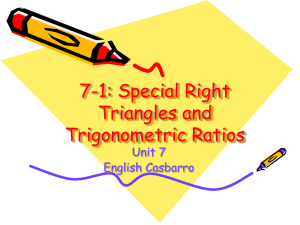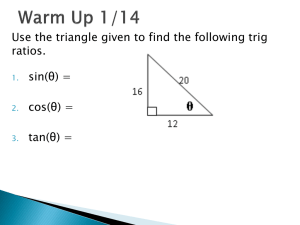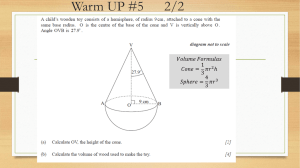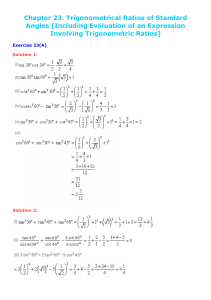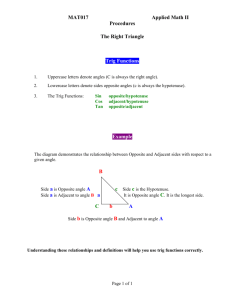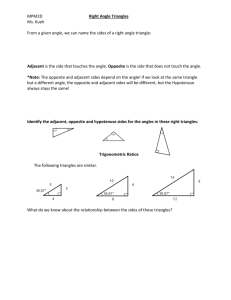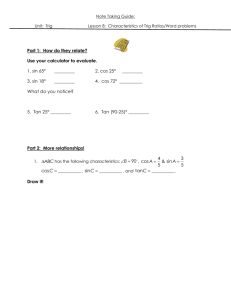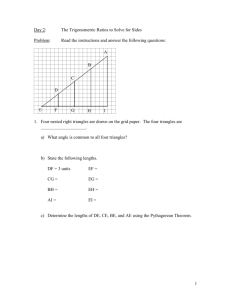Solving For Unknown Angles And Sides Using Trigonometric Ratios
advertisement
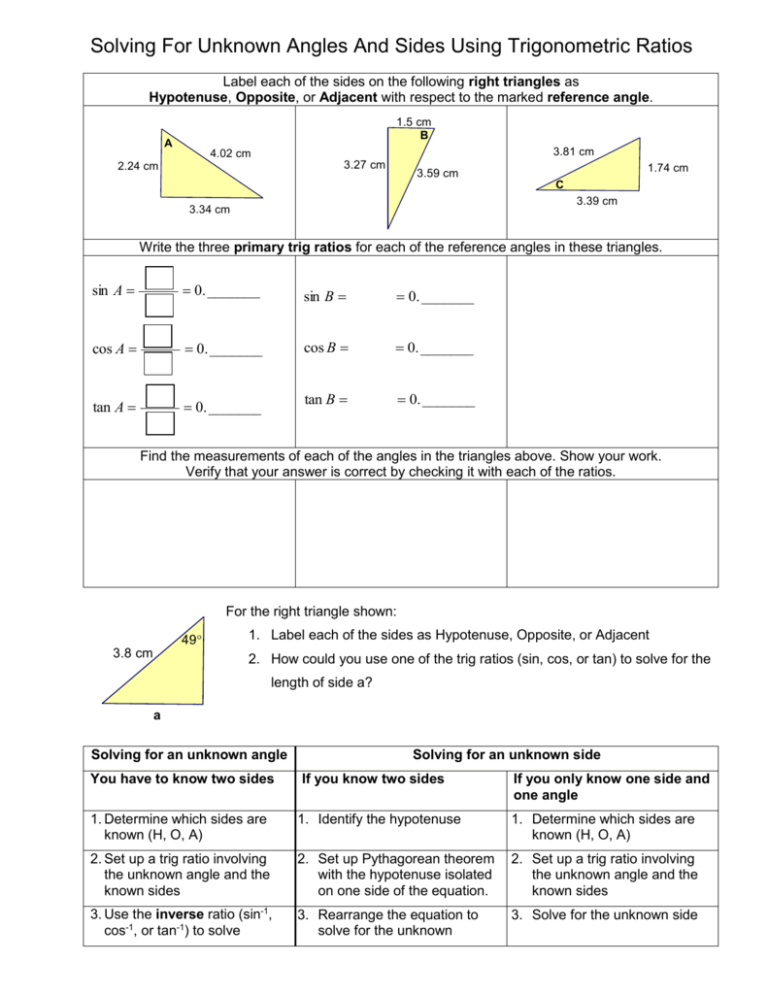
Solving For Unknown Angles And Sides Using Trigonometric Ratios Label each of the sides on the following right triangles as Hypotenuse, Opposite, or Adjacent with respect to the marked reference angle. 1.5 cm B A 3.81 cm 4.02 cm 3.27 cm 2.24 cm 1.74 cm 3.59 cm C 3.39 cm 3.34 cm Write the three primary trig ratios for each of the reference angles in these triangles. sin A 0. _______ sin B 0. _______ cos A 0. _______ cos B 0. _______ tan A 0. _______ tan B 0. _______ Find the measurements of each of the angles in the triangles above. Show your work. Verify that your answer is correct by checking it with each of the ratios. For the right triangle shown: 49 3.8 cm 1. Label each of the sides as Hypotenuse, Opposite, or Adjacent 2. How could you use one of the trig ratios (sin, cos, or tan) to solve for the length of side a? a Solving for an unknown angle You have to know two sides Solving for an unknown side If you know two sides If you only know one side and one angle 1. Determine which sides are known (H, O, A) 1. Identify the hypotenuse 1. Determine which sides are known (H, O, A) 2. Set up a trig ratio involving the unknown angle and the known sides 2. Set up Pythagorean theorem with the hypotenuse isolated on one side of the equation. 2. Set up a trig ratio involving the unknown angle and the known sides 3. Use the inverse ratio (sin-1, cos-1, or tan-1) to solve 3. Rearrange the equation to solve for the unknown 3. Solve for the unknown side
